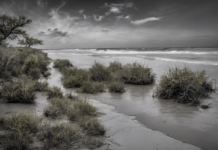When it comes to probability theory, we often deal with values that range from 0 to 1, where 0 signifies an event that cannot occur and 1 denotes an event that is certain to occur. These values are inclusive limits that form the essence of probability as a concept. Real numbers that fall within this range are referred to as probabilities, as they represent the likelihood of an event happening.
Conversely, non-negative real numbers that do not fall within the range of 0 to 1 cannot represent probabilities in the context of probability theory. This is because probabilities must adhere to certain axioms and properties to be considered valid within the realm of probability theory.
Here, we delve into why non-negative real numbers outside the (0,1) interval cannot represent probabilities and elucidate the significance of adhering to the axioms of probability theory.
Characteristics of Probability
In probability theory, probabilities must satisfy the following fundamental axioms:
-
Non-Negativity: Probabilities cannot be negative. This axiom ensures that the likelihood of an event occurring is always a non-negative value.
-
Additivity: The probability of the union of two mutually exclusive events is the sum of the individual probabilities of the events. This axiom is crucial for combining probabilities of different events.
-
Normalization: The probability of the entire sample space is 1. This axiom ensures that at least one outcome will occur from the set of possible outcomes.
The Range of Probabilities
Probabilities range between 0 and 1, inclusive. A probability of 0 implies that the event is impossible, while a probability of 1 signifies certainty.
When a real number falls outside the range of [0,1], it cannot serve as a valid probability within the framework of probability theory. Here are some scenarios where non-negative real numbers fail to represent probabilities:
-
Probabilities Greater Than 1: If a real number exceeds 1, it implies that the event is considered more than certain, which violates the fundamental concept of probabilities ranging from 0 to 1.
-
Probabilities Less Than 0: A negative probability makes no intuitive sense, as probabilities by definition denote the likelihood of an event occurring, and this likelihood cannot be negative.
Consequences of Violating Probability Axioms
1. Interpretational Issues:
- Utilizing non-negative real numbers outside the valid range could lead to misinterpretations or misrepresentations of the likelihood of events. Probability values outside [0,1] lack probabilistic meaning and could cause confusion in decision-making processes.
2. Computational Challenges:
- Calculations involving probabilities that do not adhere to the axioms of probability can result in incorrect or nonsensical outcomes. The rules of probability theory are designed to ensure consistency and accuracy in calculations.
3. Invalidating Probability Models:
- Violating the axioms of probability undermines the foundation of probability models and theories. The reliability and predictive power of these models rely on the adherence to the established principles of probability.
Frequently Asked Questions (FAQs)
- Can a probability be negative?
No, probabilities cannot be negative. They must range from 0 (impossible event) to 1 (certain event).
- Why are probabilities limited to the range [0,1]?
Probabilities are constrained to [0,1] to ensure consistency, interpretability, and meaningful calculations within the framework of probability theory.
- What does a probability greater than 1 indicate?
A probability exceeding 1 implies that the event is considered more than certain, which contradicts the principles of probability theory.
- How do non-negative real numbers impact probability calculations?
Non-negative real numbers outside the [0,1] interval can lead to erroneous results and violate the axioms of probability, affecting the integrity of probability calculations.
- Is it possible to have a probability of exactly 0 or 1?
Yes, a probability of 0 indicates that an event is impossible, while a probability of 1 signifies certainty in the occurrence of an event.
- What happens if the probabilities of all outcomes in a sample space sum up to a value greater than 1?
If the sum of probabilities exceeds 1, the probabilities are not properly normalized, violating the axiom that states the total probability of all outcomes in a sample space must be 1.
Adhering to the foundational axioms of probability theory ensures the coherence and validity of probabilistic reasoning in various fields such as statistics, machine learning, and decision-making. By recognizing the limitations of non-negative real numbers outside the [0,1] interval in representing probabilities, we uphold the integrity of probabilistic models and analyses.









